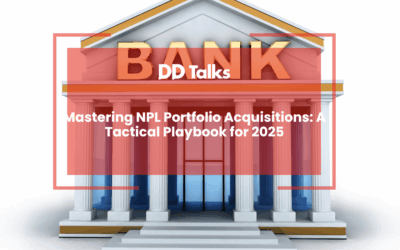Key Takeaways: Securitisation Markets in 2025
- Regulatory frameworks are driving increased transparency and risk retention in securitisation markets
- ESG and sustainable finance are becoming central to securitisation strategies, creating new investment opportunities
- Technological innovations like AI, blockchain, and smart contracts are transforming structured finance processes
- Emerging markets are expanding the scope of securitisation with novel asset classes and risk assessment models
- Strategic adaptation is crucial for market participants navigating complex regulatory and technological landscapes
- The market outlook for 2025-2030 is positive, with continued growth in sustainable and digital securitisation segments
Table of Contents
- Understanding the Evolution of Securitisation Markets in 2025
- How Are Regulatory Frameworks Reshaping Securitisation?
- Green and ESG-Linked Securitisation: Leading the Change
- Technology Transformation in Structured Finance
- Emerging Markets and New Asset Classes
- Strategic Considerations for Market Participants
- Market Outlook 2025-2030: Key Predictions
Understanding the Evolution of Securitisation Markets in 2025
The evolving regulatory frameworks in securitisation markets are reshaping the financial landscape as we approach 2025. The current state of securitisation reflects a mature market adapting to new challenges and opportunities. Market participants are witnessing unprecedented growth in structured finance products, driven by technological innovation and changing investor preferences.
Key market drivers include increased demand for alternative funding sources, enhanced transparency requirements, and the growing importance of sustainable finance. Global economic shifts, particularly in emerging markets, are creating new opportunities for securitisation structures while challenging traditional models.
How Are Regulatory Frameworks Reshaping Securitisation?
Regulatory compliance in securitisation continues to evolve, with new requirements focusing on risk retention and transparency. Global regulatory harmonisation efforts are creating a more standardised approach to securitisation across jurisdictions. The implementation of enhanced reporting standards ensures better risk assessment and market stability.
Risk retention rules have become more stringent, requiring originators to maintain significant economic interest in securitised assets. This alignment of interests between issuers and investors has strengthened market confidence and improved overall transaction quality.
Green and ESG-Linked Securitisation: Leading the Change
ESG securitisation is emerging as a dominant trend, with sustainable finance integration becoming increasingly important. The market for green bonds continues to expand, creating new opportunities for environmentally conscious investors. ESG scoring mechanisms are being developed to standardise the evaluation of sustainable securitisation products.
Impact investment opportunities in securitisation are growing, particularly in renewable energy and sustainable infrastructure projects. This transformation is driving innovation in structure and risk assessment models while meeting growing investor demand for sustainable investments.
Technology Transformation in Structured Finance
Digital securitisation is revolutionising the structured finance landscape through AI and machine learning applications. Blockchain implementation is enhancing transparency and reducing transaction costs, while smart contracts are automating key processes in securitisation deals.
The integration of advanced analytics and real-time monitoring systems is improving risk assessment capabilities. Technology-driven innovations are creating more efficient markets and enabling new forms of asset securitisation.
Emerging Markets and New Asset Classes
Alternative asset securitisation is expanding into new territories, with emerging markets playing an increasingly important role. Geographic market expansion is creating diverse investment opportunities, while innovation in structure is enabling the securitisation of previously untapped asset classes.
New risk assessment models are being developed to evaluate these novel asset types, providing investors with better tools for decision-making. The growth in emerging market securitisation is driving market sophistication and product diversity.
Strategic Considerations for Market Participants
Investor perspectives are evolving with the changing market landscape, requiring new approaches to risk management and portfolio diversification. Issuer strategies are adapting to incorporate ESG considerations and technological innovations while maintaining competitive advantages.
Market positioning has become increasingly important as participants navigate new regulatory requirements and changing investor preferences. The focus on sustainable and technology-enabled solutions is shaping strategic decision-making across the industry.
Market Outlook 2025-2030: Key Predictions
Market growth projections indicate continued expansion in securitisation markets, with particular strength in sustainable and digital segments. Sector-specific trends suggest increasing specialisation and innovation in structured finance products.
While market challenges persist, particularly around regulatory compliance and risk assessment, significant opportunity areas exist in emerging markets and new asset classes. The outlook for 2025-2030 remains positive, with sustainable finance and technological innovation driving market development.
Frequently Asked Questions
- What is driving the evolution of securitisation markets in 2025?
- Key drivers include technological innovation, increased demand for alternative funding sources, enhanced transparency requirements, and the growing importance of sustainable finance. Global economic shifts and emerging market opportunities are also significantly transforming the securitisation landscape.
- How are ESG considerations impacting securitisation?
- ESG securitisation is becoming a dominant trend, with sustainable finance integration creating new investment opportunities. Green bonds are expanding, impact investment in renewable energy and infrastructure is growing, and new ESG scoring mechanisms are being developed to standardize sustainable product evaluation.
- What technological innovations are transforming structured finance?
- Digital securitisation is being revolutionized through AI, machine learning, and blockchain technologies. Smart contracts are automating deal processes, advanced analytics are improving risk assessment, and real-time monitoring systems are creating more efficient and transparent markets.
- How are regulatory frameworks changing securitisation?
- Regulatory changes focus on enhanced risk retention rules, increased transparency, and global harmonisation of standards. Originators are now required to maintain significant economic interest in securitised assets, which has improved market confidence and transaction quality.
- What opportunities exist in emerging markets for securitisation?
- Emerging markets are creating diverse investment opportunities through alternative asset securitisation, expanding into new geographic territories and enabling the securitisation of previously untapped asset classes. New risk assessment models are being developed to evaluate these novel asset types.
- What is the market outlook for securitisation between 2025-2030?
- The outlook remains positive, with projected growth in sustainable and digital securitisation segments. Market expansion is expected to continue, driven by technological innovation, emerging market opportunities, and increasing focus on sustainable finance solutions.
- How are investors adapting to the changing securitisation landscape?
- Investors are evolving their strategies to incorporate ESG considerations, leverage technological innovations, and diversify portfolios. There’s an increased focus on sustainable investments, digital platforms, and more sophisticated risk management approaches.
Achieve Secures $186.4M AAA Personal Loan Securitisation



0 Comments